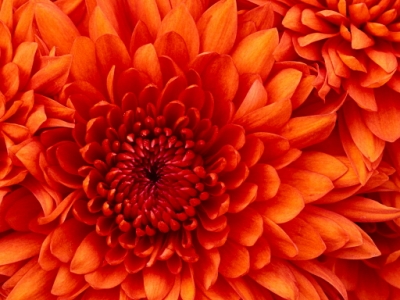
Mobile:
0411 222 333
11 Street Name Suburb, State, Australia, 1111
Sponsors


A flower, sometimes known as a bloom or blossom, is the reproductive structure found in flowering plants (plants of the division Magnoliophyta, also called angiosperms). The biological function of a flower is to effect reproduction, usually by providing a mechanism for the union of sperm with eggs. Flowers may facilitate outcrossing (fusion of sperm and eggs from different individuals in a population) or allow selfing (fusion of sperm and egg from the same flower). Some flowers produce diaspores without fertilization (parthenocarpy).
Flowers contain sporangia and are the site where gametophytes develop. Flowers give rise to fruit and seeds. Many flowers have evolved to be attractive to animals, so as to cause them to be vectors for the transfer of pollen.
In addition to facilitating the reproduction of flowering plants, flowers have long been admired and used by humans to beautify their environment, and also as objects of romance, ritual, religion, medicine and as a source of food.
Morphology
Diagram showing the main parts of a mature flower
A stereotypical flower consists of four kinds of structures attached to the tip of a short stalk. Each of these kinds of parts is arranged in a whorl on the receptacle. The four main whorls (starting from the base of the flower or lowest node and working upwards) are as follows:
Calyx: the outermost whorl consisting of units called sepals; these are typically green and enclose the rest of the flower in the bud stage, however, they can be absent or prominent and petal-like in some species.
Corolla: the next whorl toward the apex, composed of units called petals, which are typically thin, soft and colored to attract animals that help the process of pollination.
Androecium (from Greek andros oikia: man's house): the next whorl (sometimes multiplied into several whorls), consisting of units called stamens. Stamens consist of two parts: a stalk called a filament, topped by an anther where pollen is produced by meiosis and eventually dispersed.
Gynoecium (from Greek gynaikos oikia: woman's house): the innermost whorl of a flower, consisting of one or more units called carpels. The carpel or multiple fused carpels form a hollow structure called an ovary, which produces ovules internally. Ovules are megasporangia and they in turn produce megaspores by meiosis which develop into female gametophytes. These give rise to egg cells. The gynoecium of a flower is also described using an alternative terminology wherein the structure one sees in the innermost whorl (consisting of an ovary, style and stigma) is called a pistil. A pistil may consist of a single carpel or a number of carpels fused together. The sticky tip of the pistil, the stigma, is the receptor of pollen. The supportive stalk, the style, becomes the pathway for pollen tubes to grow from pollen grains adhering to the stigma.
Although the arrangement described above is considered "typical", plant species show a wide variation in floral structure. These modifications have significance in the evolution of flowering plants and are used extensively by botanists to establish relationships among plant species.
Floral diagram for the genus Nepenthes
A floral formula is a way to represent the structure of a flower using specific letters, numbers, and symbols. Typically, a general formula will be used to represent the flower structure of a plant family rather than a particular species. The following representations are used:
Ca = calyx (sepal whorl; e. g. Ca5 = 5 sepals)
Co = corolla (petal whorl; e. g., Co3(x) = petals some multiple of three )
Z = add if zygomorphic (e. g., CoZ6 = zygomorphic with 6 petals)
A = androecium (whorl of stamens; e. g., A∞ = many stamens)
G = gynoecium (carpel or carpels; e. g., G1 = monocarpous)
x: to represent a "variable number"
∞: to represent "many"
A floral formula would appear something like this:
Ca5Co5A10 - ∞G1
Several additional symbols are sometimes used (see Key to Floral Formulas).
| No. | CATEGORY | TITLE | DATE | VIEWS |
|---|---|---|---|---|
3 | Blog | Animal - sample | 17/06/2013 | 480 |
2 | Blog | Flower - sample | 13/04/2013 | 929 |
1 | Blog | Animals and Flowers | 16/05/2012 | 602 |




